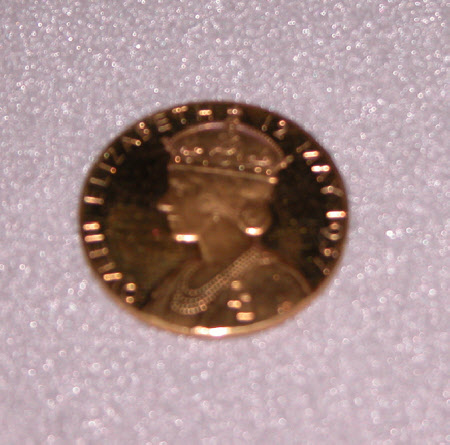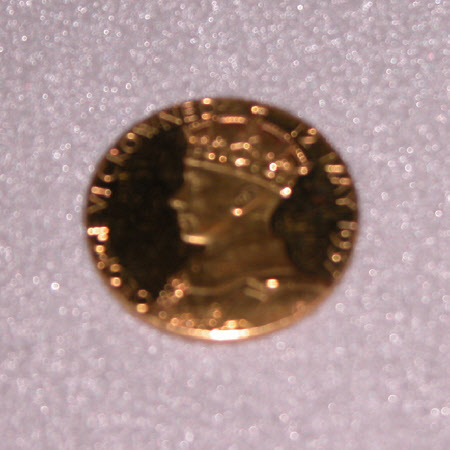Coronation medal of King George VI and Queen Elizabeth
Percy Metcalfe
Category
Coins and medals
Date
1937
Materials
Gold
Measurements
315 mm (Diameter)
Place of origin
United Kingdom
Order this imageCollection
Anglesey Abbey, Cambridgeshire
NT 517321
Summary
Gold, Coronation medal of King George VI and Queen Elizabeth, designed by Percy Metcalfe (1895-1970), struck Royal Mint, 1937. A gold double-sided medal commemorating the Coronation of King George VI (1895-1952) and his consort Queen Elizabeth, the future Queen Mother (1900-2002), on 12 May 1937, designed by Percy Metcalfe. The obverse shows the crowned King in profile with the legend inscription: 'GEORGE VI CROWNED / 12 MAY 1937'. The reverse shows the Queen in profile with the legend inscription: 'QVEEN ELIZABETH/ 12 MAY 1937'. The medal is monogrammed by Percy Metcalfe on the truncation of both busts. The medal was made in two sizes; this is an example of the smaller version.
Full description
Albert, Duke of York, never expected to be King and came unwillingly to the throne as King George VI, after the abdication of his elder brother Edward, who reigned as Edward VIII for less than a year in 1936, abdicating in order to be able to marry his lover, Mrs Wallis Simpson. The Coronation of King George VI and Queen Elizabeth took place on 12 May 1937, the day that had been scheduled for Edward VIII’s Coronation. The 1937 Coronation was the first time that the ceremony had been broadcast by radio, making it accessible to a much broader range of the public. Thousands of people also made the journey to London to line the Mall and other streets. Numerous medals were published to commemorate the occasion, but Percy Metcalfe’s was the official medal. It was published in a large size (5.7 cm., with gold and silver versions) and in a smaller size (3.2 cm., gold, silver and copper). The small gold medal was published in an issue of 422, in a presentation case at a price of £12 12s. 0d. Percy Metcalfe made many designs for coins and medals for the Royal Mint between 1924 and 1948. Born in Leeds, he studied at the Royal College of Art under Francis Derwent Wood, and worked as a sculptor and designer. He is best known as a designer of coins and medals in a distinctive modernist Art Deco style. In 1924 he won a competition organised by the Goldsmiths Company for a medal commemorating the British Empire Exhibition, which was used as the official award medal for exhibitors. In 1928 he designed the first coinage for the Irish Free State, a famous set of eight coins with iconic designs of animals, which became known as the ‘Barnyard Collection’. Metcalfe also designed the harp emblem for the Great Seal of the Irish Free State and, in 1940, the George Cross, the highest award for civilian gallantry. Among the medals at Anglesey Abbey, Metcalfe also designed the Silver Jubilee medal for King George V (NT 517319). Jeremy Warren 2019
Provenance
Urban Huttleston Rogers Broughton, 1st Lord Fairhaven (1896-1966); bequeathed to the National Trust in 1966 by Lord Fairhaven with the house and the rest of the contents.
Credit line
Anglesey Abbey, The Fairhaven Collection (The National Trust)
Marks and inscriptions
Reverse, legend: GEORGE VI CROWNED / 12 MAY 1937 Reverse, truncation: PM Obverse, legend: QVEEN ELIZABETH/ 12 MAY 1937 Obverse, truncation: PM
Makers and roles
Percy Metcalfe, designer The Royal Mint, manufacturer
References
Wollaston 1978: Henry Wollaston, The Commemorative Collectors Guide to British Official Medals for Coronations and Jubilees, Nottingham 1978, pp. 14, 83-84, no. xx. Brown 1995: Laurence Brown, A Catalogue of British Historical Medals 1760-1960. Volume III. The Accession of Edward VII to 1960, London 1995, pp. 158-59, no. 4314. Eimer 2010: Christopher Eimer, British Commemorative Medals and their Values, London 2010, p. 267, no. 20146, Pl. 228. Whittlestone and Ewing 2009: Andrew Whittlestone and Michael Ewing, Royal Commemorative Medals 1837-1977. Vol. 7, King George the Sixth, 1936-1952, Llanfyllin 2009, p. 7, no. 7000.

